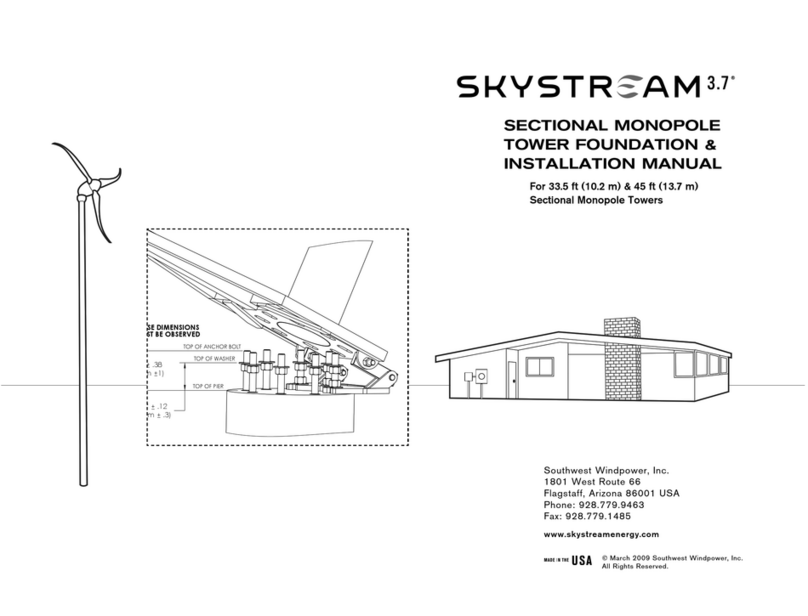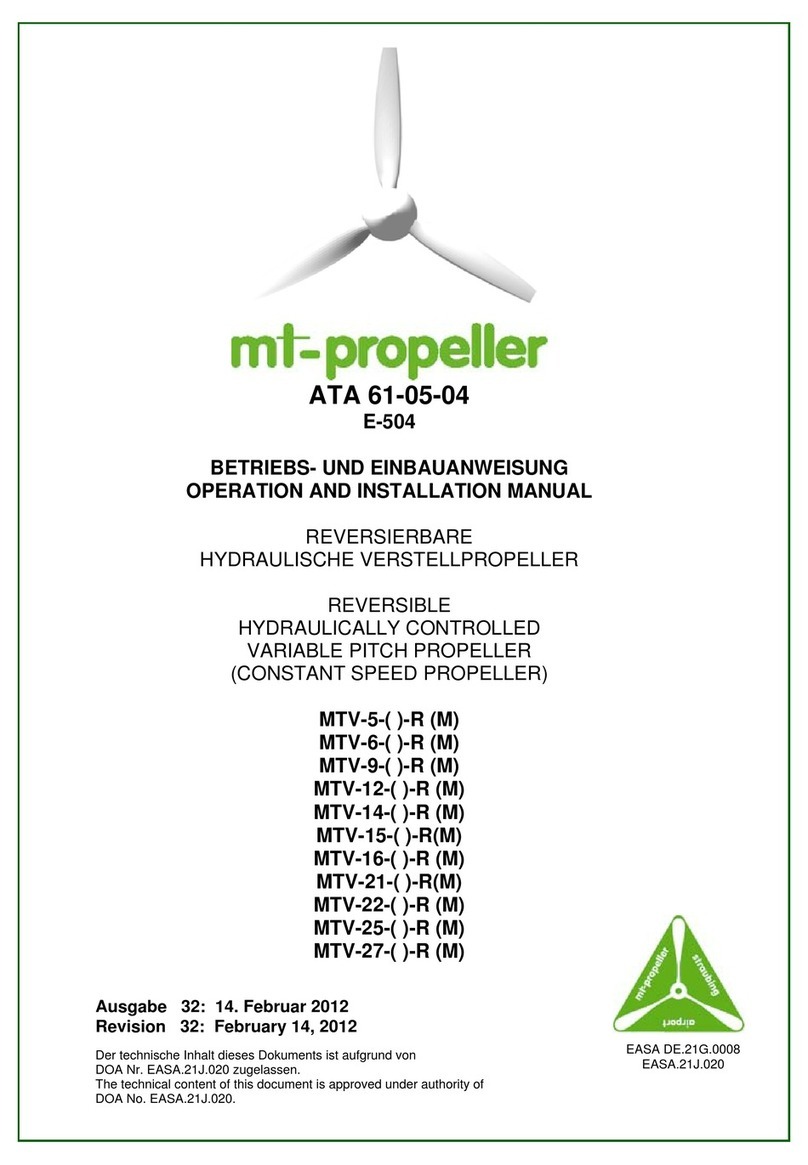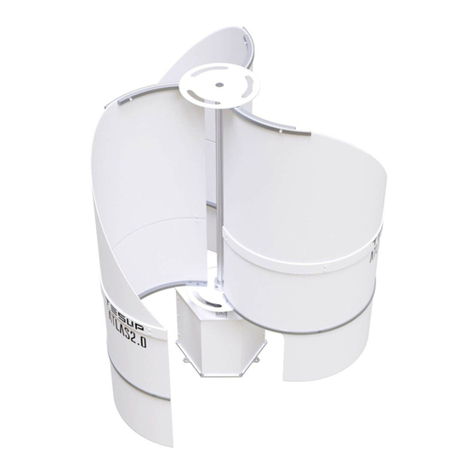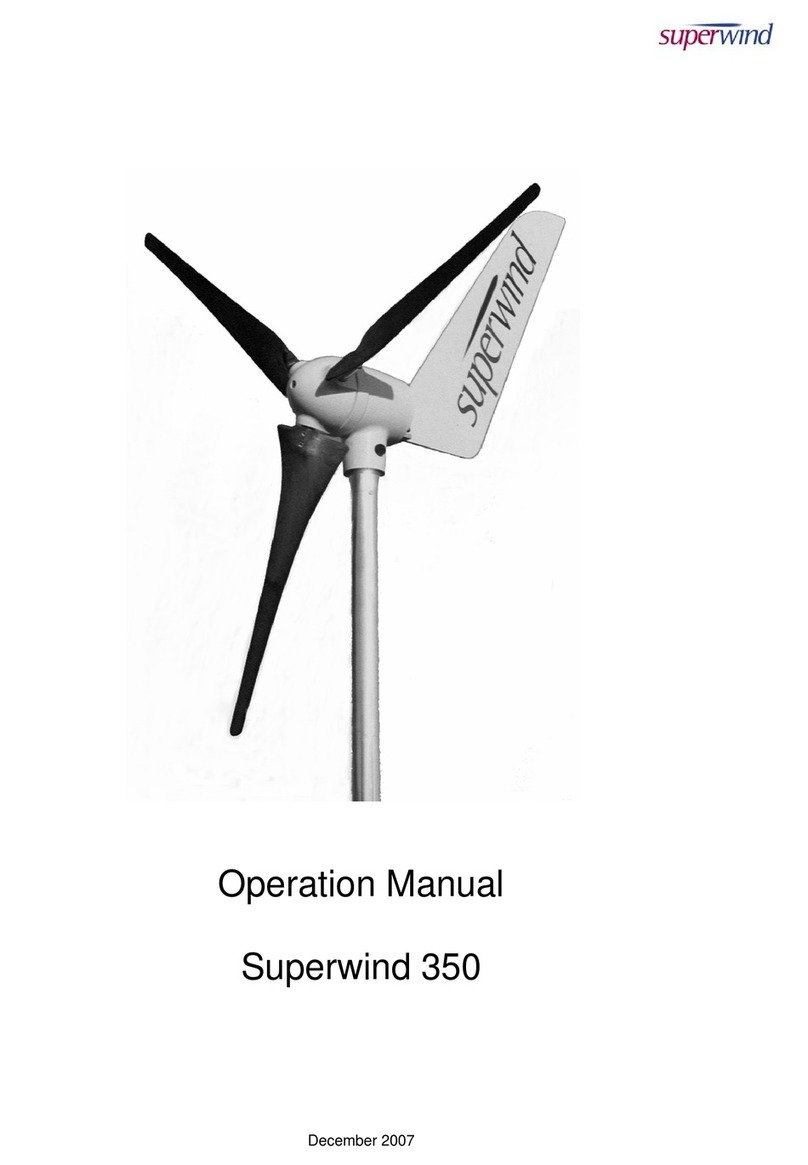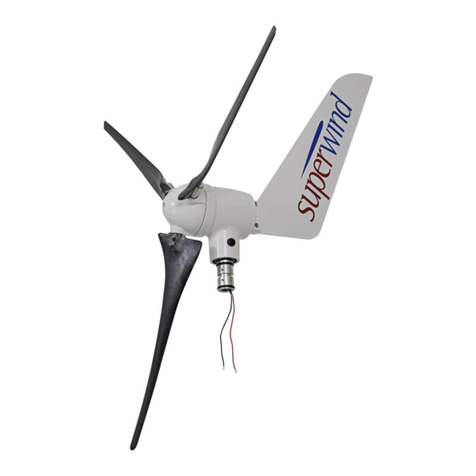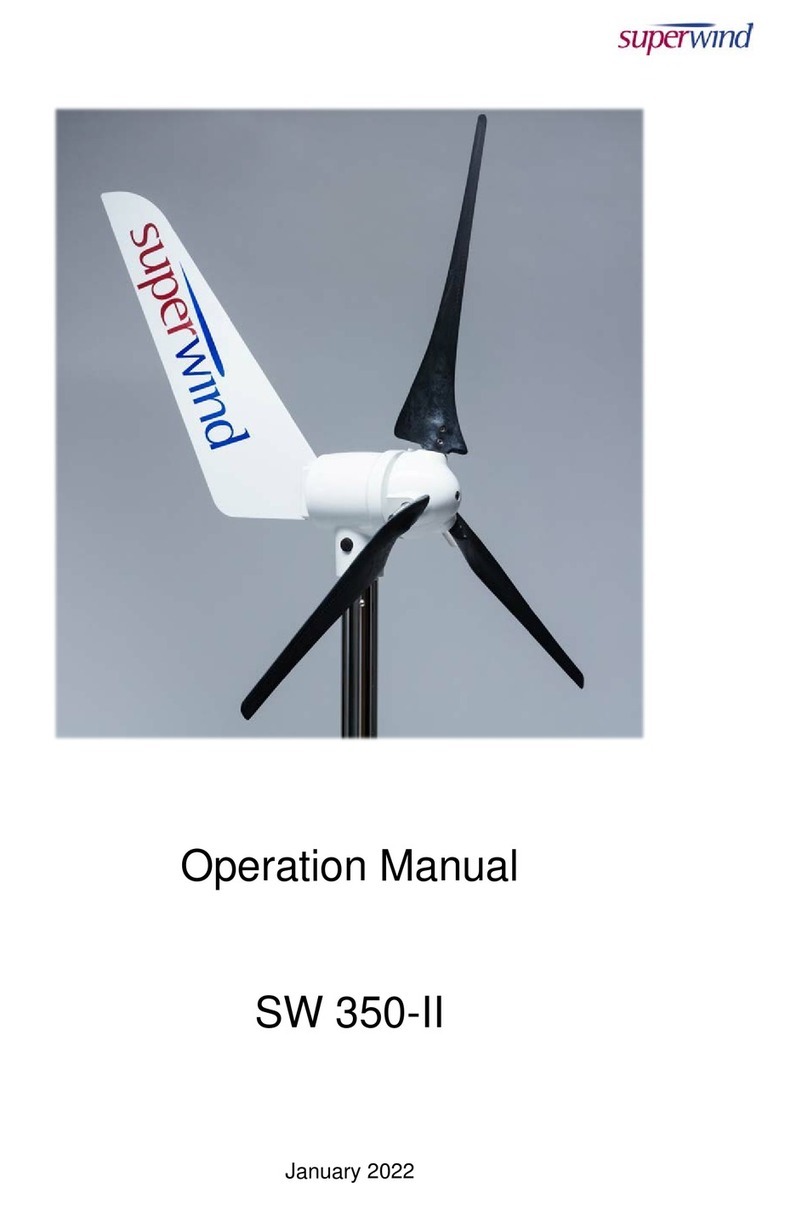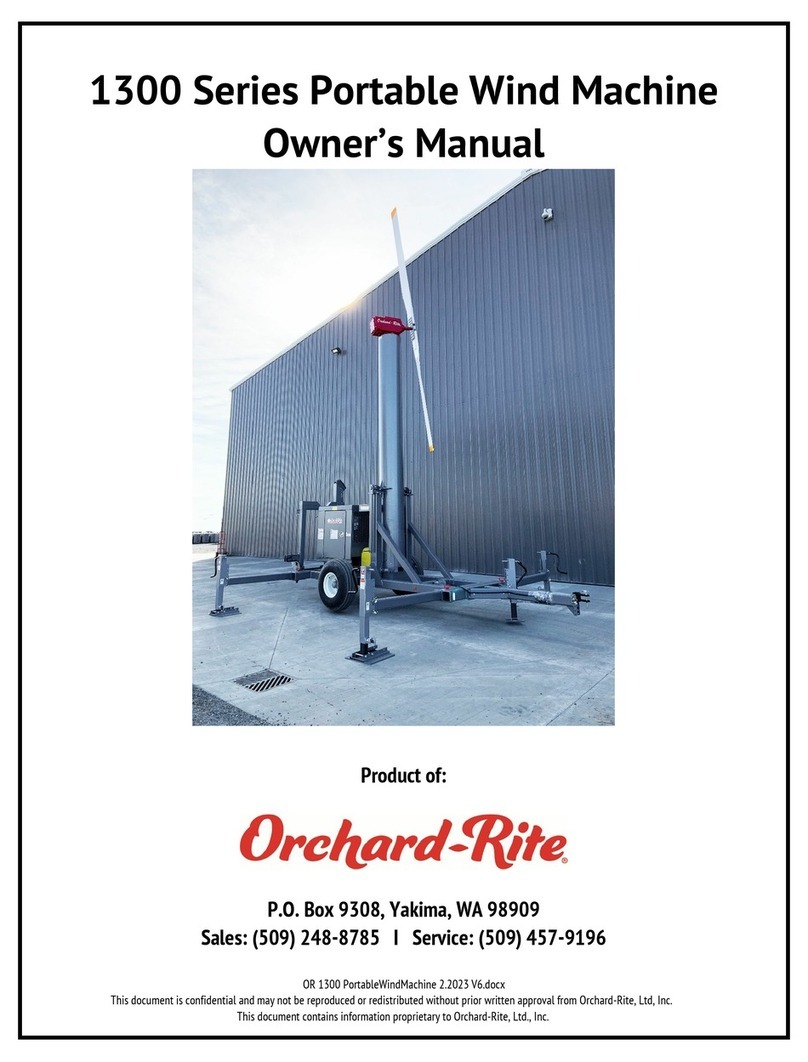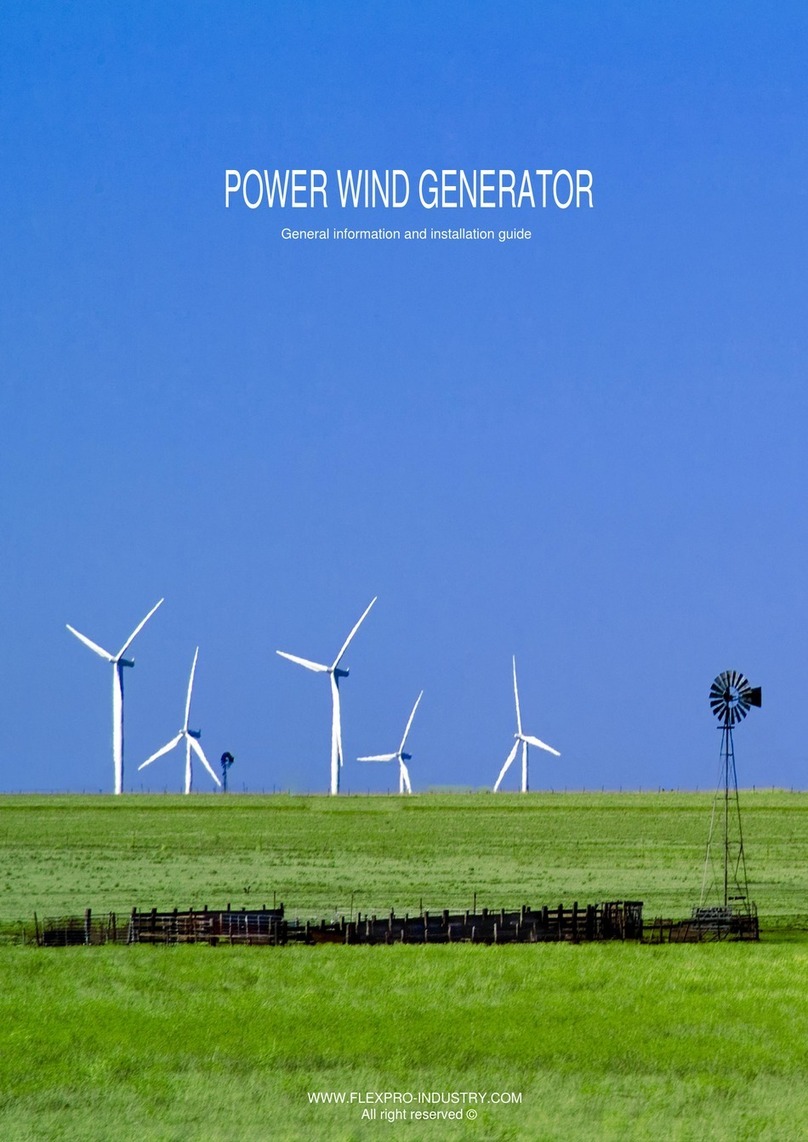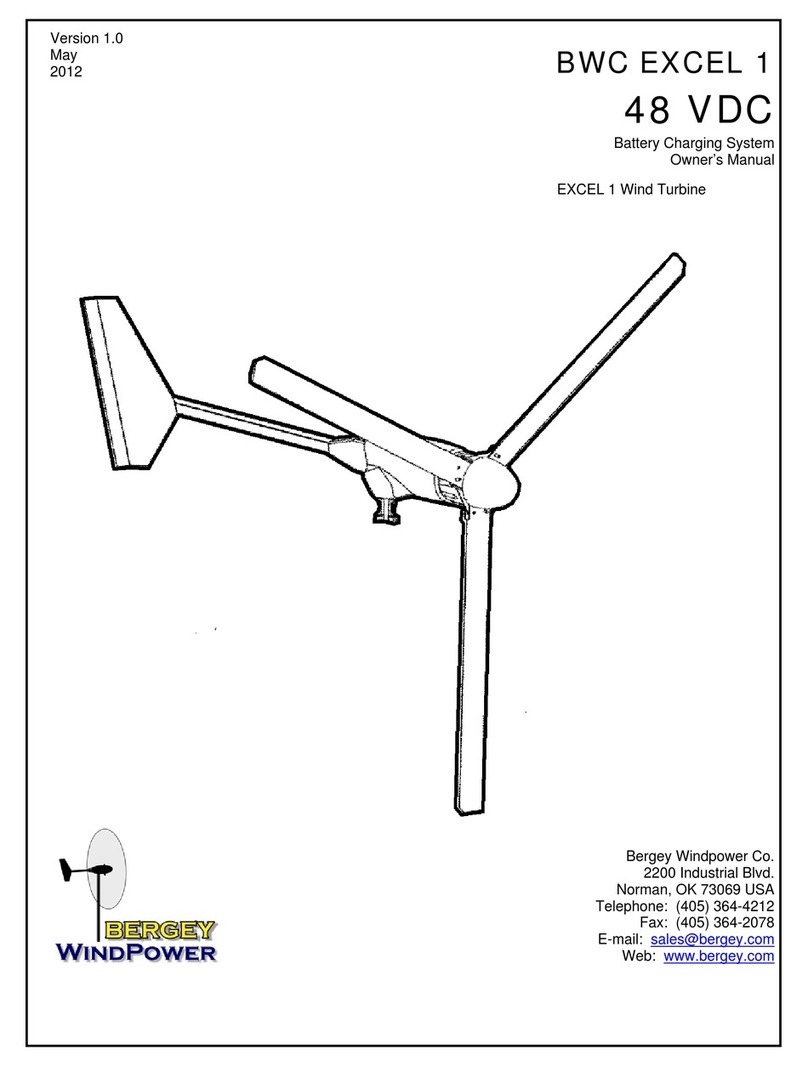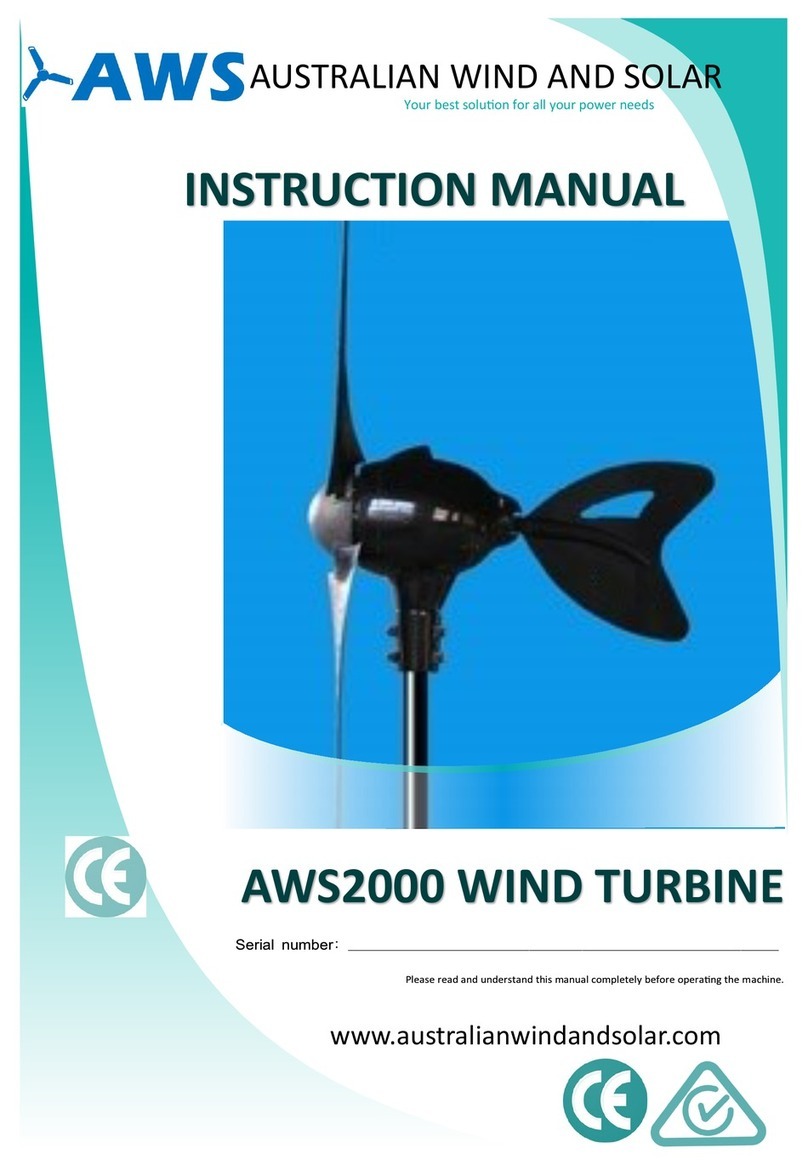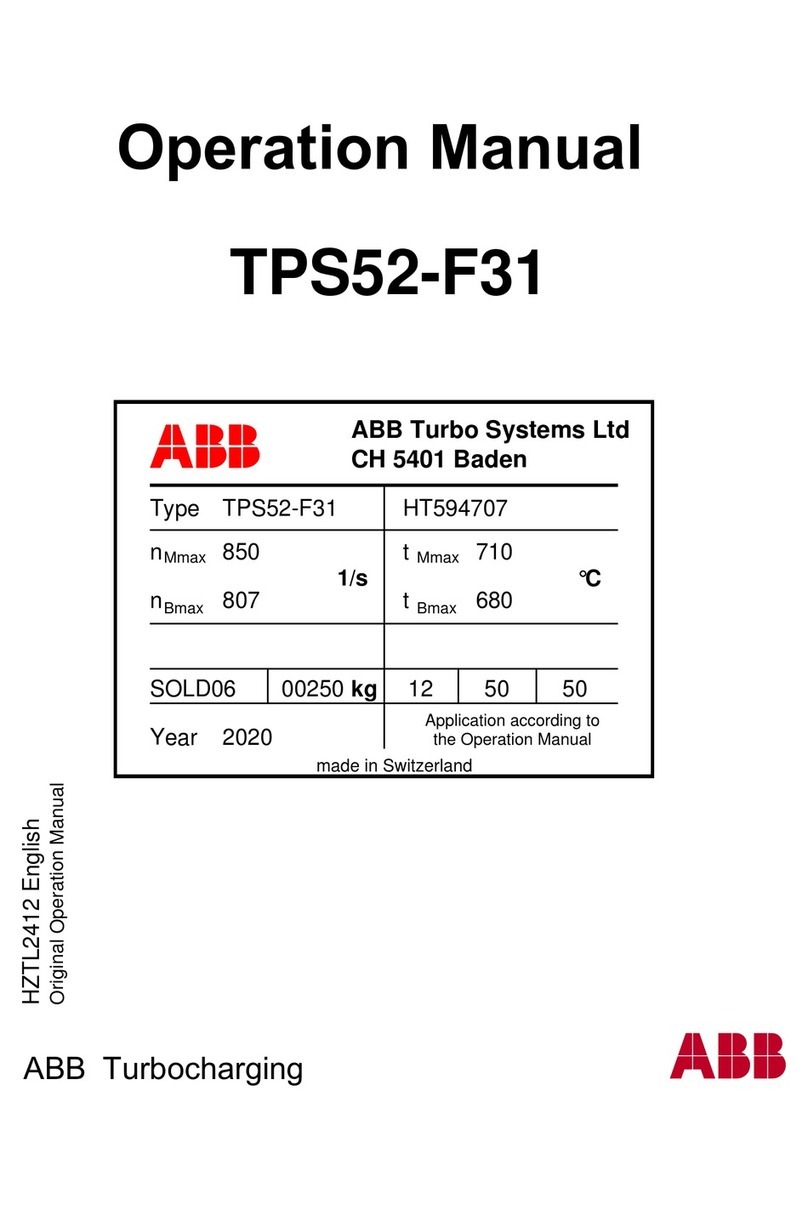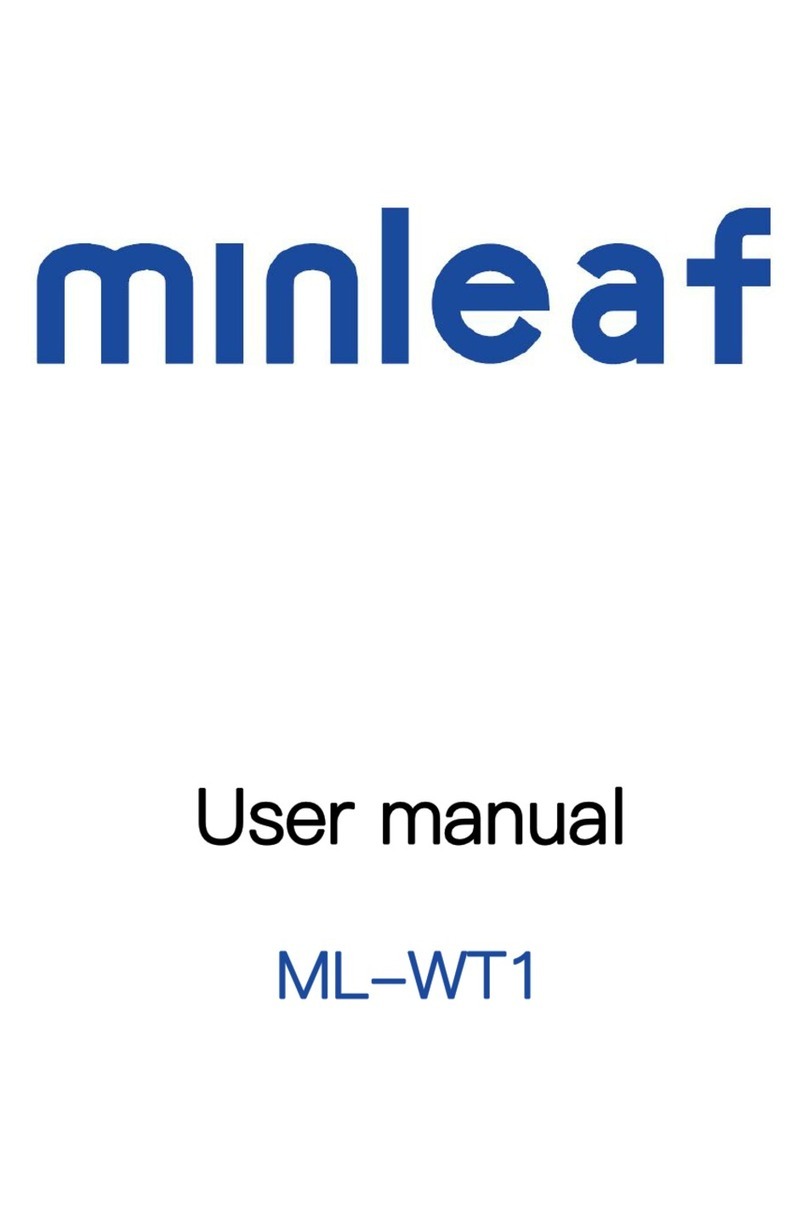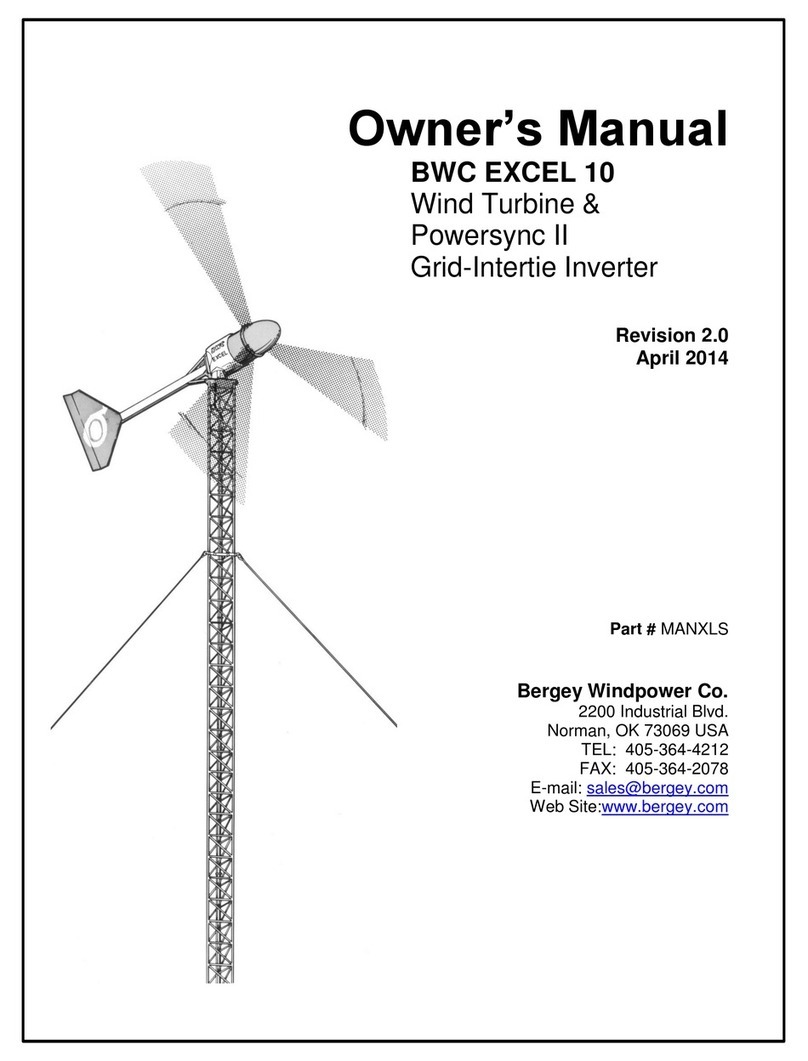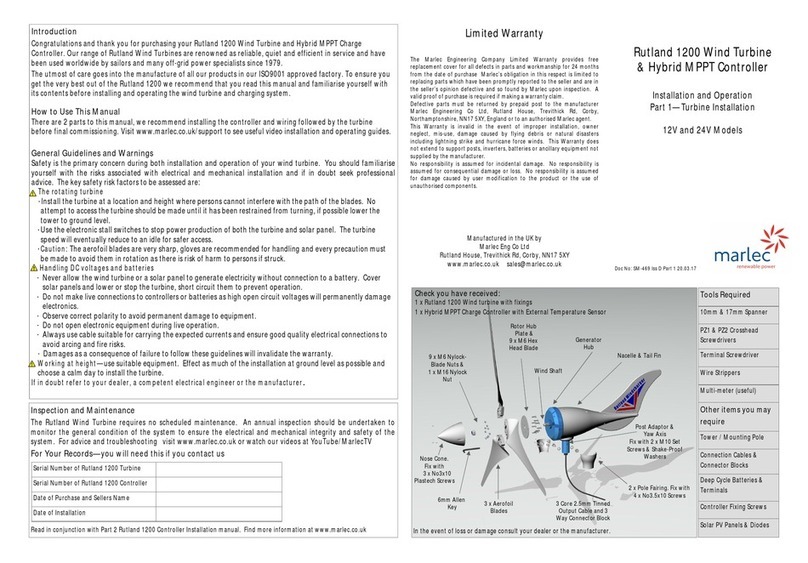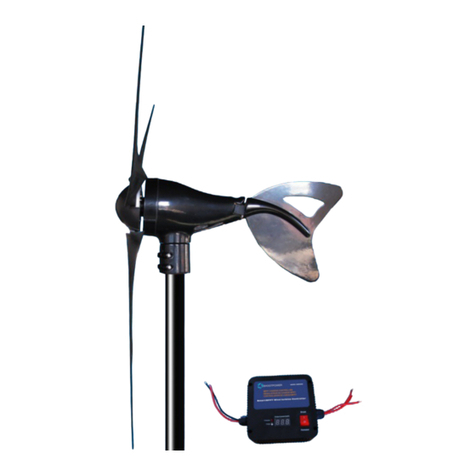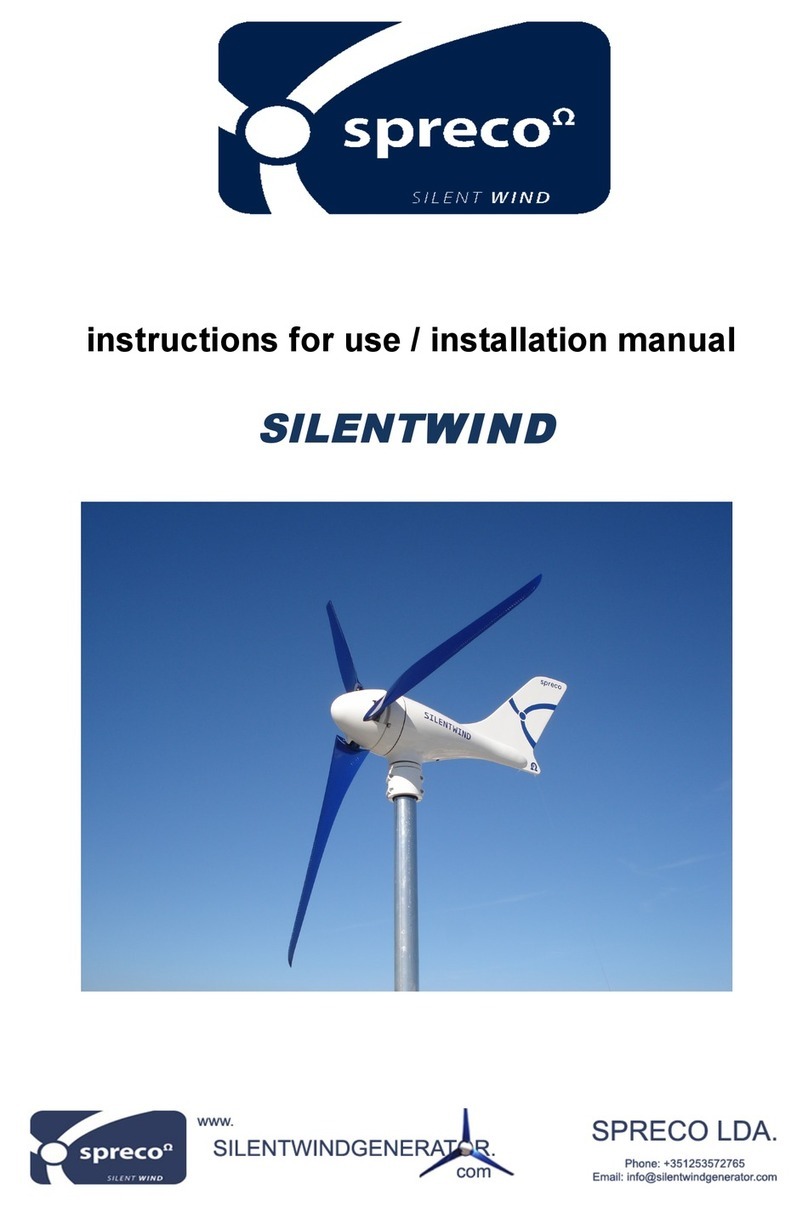
5
The Superwind 1250 is also fully compatible with installations utilizing solar arrays. At many locations,
wind and solar energy complement each other. A wind / solar dual charging system featuring the
Superwind 1250 allows you to optimise available power sources, while requiring minimal battery
capacity.
2. Safety instructions
For your safety, please read this manual thoroughly prior to the assembly and installation of your
Superwind 1250. The information provided is to ensure your safety during mounting and operation, as
well as for maintenance and troubleshooting. If you have any additional questions please contact your
dealer, a superwind service partner or the manufacturer.
2.1 Potential hazards
There are a number of potential physical and electrical hazards associated with the installation and
operation of a wind turbine. Familiarity with safety practices and procedures beforehand is crucial, both in
avoiding injury to personnel and damage to the Superwind 1250 wind turbine.
2.1.1 Mechanical hazards
The main physical hazard is contact with a spinning rotor. The rotor blades can cause serious injury, even
at very low speed.
WARNING: Never touch the rotor blades while moving!
Never try to stop a turning rotor by hand!
Never mount the rotor in a location where it can accidentally come into contact with
personnel!
The rotor blades are constructed of glass fibre and carbon fibre reinforced plastic. This material is
extremely durable (which enables your Superwind 1250 to cope with heavy storms) however it can break
if objects are introduced into the rotor at higher rotational speeds.
WARNING: Never let anything strike the rotor while in operation!
2.1.2 Electrical hazards
Even at low wind speeds the generator can produce dangerous open circuit voltages at no-load operation
(i.e. with the electric connection to the battery disconnected). The 24 VDC version can produce up to 54
VAC between 2 phases of the wind generator wires and 72 VDC at the battery terminals of the DC-box.
The 48 VDC version can produce up to 108 VAC between 2 phases of the wind generator wires and 144
VDC at the battery terminals of the DC-box.
Charging currents can reach up to 43 Amps DC (24 V version) and up to 22 Amps DC (48 V version). As
such, all cabling, electrical components and connectors must be rated to 80 Amps (24 V version) and 40
Ampere (48 V version) respectively. Refer to Section 5.3 for additional information.
WARNING: Use of undersized cabling can resulted in overheating and failure, possibly creating fire
and shock hazard!
Fuses are installed in the DC-box to protect the cabling (see Section 5.3.2. for details). Never short-circuit
the battery, which can result in fire or explosion of the battery, along with release of acid and toxic gases.
WARNING: Never short-circuit the battery!
Unsealed lead-acid batteries produce and vent flammable hydrogen gas during charging. This creates an
explosive mixture that can easily be detonated by even the smallest of sparks (those produced by an
